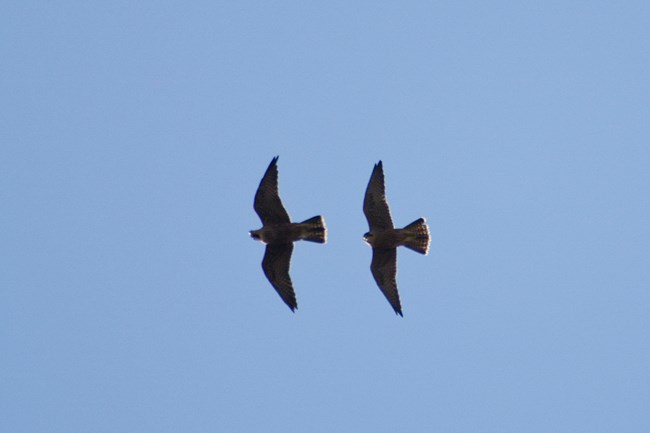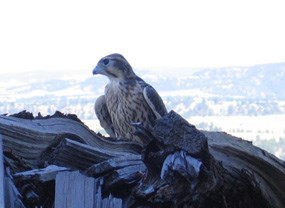
NPS photo Devils Tower National Monument wishes to thank the climbing community and all park visitors who have been curious about the falcons, asked questions, provided their sightings, and have adhered to the climbing closure. 
Annual Closure for Nesting FalconsSome routes are temporarily closed each spring in order to protect nesting prairie and peregrine falcons. During this time, nesting activity is monitored by park staff. Routes will be reopened when no nesting activity is observed and/or falcons fledge. Climbing near raptor nests stresses the birds and often leads to chick death or nest abandonment. Defensive raptor behavior is also potentially dangerous for climbers. Please check for route closures when you register to climb - they will be posted on the registration kiosk. Rangers will strictly enforce these closures. Voluntary June Climbing ClosureObservance of the voluntary June closure helps balance Native American cultural and ceremonial values, with the status of the Tower as a world-class destination for rock climbers.The June voluntary climbing closure was selected as part of the Devils Tower Climbing Management Plan by a working group that included two climber organizations, two Native American organizations, and other agency and local government representatives. During the month of June climbers are strongly encouraged to consider enjoying the many other climbing options available in northeast Wyoming and the Black Hills area of South Dakota. I don’t see any ceremonies, is it still discouraged to climb?The voluntary June closure is not tied to the visible presence of affiliated Native American tribes ceremonies at the Tower. These ceremonies occur many days throughout the year, and in various areas throughout the Monument. These ceremonies are spiritual, private, and may not be visible to visitors. Maximizing compliance with the voluntary closure is necessary to achieve balance and foster respect between American Indian cultural values and climber access.
Why is climbing discouraged, but not other recreational activities?Entering the boulder field, including technical rock climbing, is perceived by some to be in direct conflict with the Tower as a sacred site. One of the key elements of the Climbing Management Plan is balancing the validity of perspectives and uses by affiliated Native American tribes and climbers. The voluntary closure includes all visitors above the Tower loop trail, not just rock climbers.
|
Last updated: April 24, 2025
